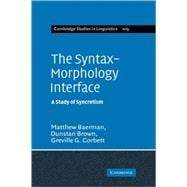
Note: Supplemental materials are not guaranteed with Rental or Used book purchases.
Purchase Benefits
What is included with this book?
| Preface | xv | ||||
|
xvii | ||||
|
1 | (12) | |||
|
3 | (1) | |||
|
4 | (3) | |||
|
7 | (2) | |||
|
7 | (1) | |||
|
8 | (1) | |||
|
9 | (1) | |||
|
10 | (3) | |||
|
10 | (1) | |||
|
11 | (1) | |||
|
12 | (1) | |||
|
13 | (24) | |||
|
13 | (4) | |||
|
13 | (4) | |||
|
17 | (1) | |||
|
17 | (6) | |||
|
17 | (2) | |||
|
19 | (4) | |||
|
23 | (4) | |||
|
27 | (8) | |||
|
28 | (2) | |||
|
30 | (3) | |||
|
33 | (2) | |||
|
35 | (2) | |||
|
37 | (89) | |||
|
38 | (19) | |||
|
38 | (2) | |||
|
40 | (16) | |||
|
56 | (1) | |||
|
57 | (18) | |||
|
57 | (2) | |||
|
59 | (4) | |||
|
63 | (7) | |||
|
70 | (5) | |||
|
75 | (1) | |||
|
75 | (6) | |||
|
75 | (1) | |||
|
76 | (3) | |||
|
79 | (1) | |||
|
80 | (1) | |||
|
81 | (1) | |||
|
81 | (11) | |||
|
81 | (1) | |||
|
82 | (1) | |||
|
83 | (3) | |||
|
86 | (4) | |||
|
90 | (1) | |||
|
91 | (1) | |||
|
92 | (3) | |||
|
92 | (1) | |||
|
93 | (1) | |||
|
94 | (1) | |||
|
95 | (1) | |||
|
95 | (8) | |||
|
95 | (1) | |||
|
96 | (4) | |||
|
100 | (1) | |||
|
101 | (2) | |||
|
103 | (1) | |||
|
103 | (8) | |||
|
103 | (2) | |||
|
105 | (3) | |||
|
108 | (3) | |||
|
111 | (1) | |||
|
111 | (13) | |||
|
111 | (1) | |||
|
112 | (1) | |||
|
113 | (1) | |||
|
113 | (1) | |||
|
114 | (4) | |||
|
118 | (1) | |||
|
119 | (1) | |||
|
120 | (1) | |||
|
121 | (2) | |||
|
123 | (1) | |||
|
123 | (1) | |||
|
123 | (1) | |||
|
124 | (1) | |||
|
124 | (2) | |||
|
126 | (45) | |||
|
126 | (1) | |||
|
126 | (7) | |||
|
126 | (5) | |||
|
131 | (1) | |||
|
132 | (1) | |||
|
133 | (17) | |||
|
136 | (3) | |||
|
139 | (5) | |||
|
144 | (1) | |||
|
145 | (5) | |||
|
150 | (16) | |||
|
150 | (1) | |||
|
151 | (9) | |||
|
160 | (3) | |||
|
163 | (3) | |||
|
166 | (5) | |||
|
166 | (3) | |||
|
169 | (2) | |||
|
171 | (48) | |||
|
172 | (11) | |||
|
175 | (2) | |||
|
177 | (3) | |||
|
180 | (2) | |||
|
182 | (1) | |||
|
183 | (3) | |||
|
186 | (18) | |||
|
187 | (1) | |||
|
188 | (6) | |||
|
194 | (5) | |||
|
199 | (1) | |||
|
200 | (3) | |||
|
203 | (1) | |||
|
203 | (1) | |||
|
203 | (1) | |||
|
204 | (13) | |||
|
206 | (1) | |||
|
206 | (1) | |||
|
206 | (1) | |||
|
207 | (6) | |||
|
213 | (3) | |||
|
216 | (1) | |||
|
217 | (2) | |||
|
219 | (4) | |||
|
219 | (1) | |||
|
220 | (1) | |||
|
221 | (2) | |||
| Appendix 1: Case syncretism in the World Atlas of Language Structures sample | 223 | (5) | |||
| Appendix 2: Person syncretism in the World Atlas of Language Structures sample | 228 | (5) | |||
| Appendix 3: Syncretism in two-place verbs in the World Atlas of Language Structures corpus | 233 | (3) | |||
| Appendix 4: DATR fragment for Dhasaanac case study | 236 | (6) | |||
| Appendix 5: DATR fragment for Dalabon case study | 242 | (6) | |||
| Appendix 6: DATR fragment for Russian case study | 248 | (6) | |||
| References | 254 | (17) | |||
| Author index | 271 | (4) | |||
| Language index | 275 | (4) | |||
| Subject index | 279 |
The New copy of this book will include any supplemental materials advertised. Please check the title of the book to determine if it should include any access cards, study guides, lab manuals, CDs, etc.
The Used, Rental and eBook copies of this book are not guaranteed to include any supplemental materials. Typically, only the book itself is included. This is true even if the title states it includes any access cards, study guides, lab manuals, CDs, etc.